Explore the captivating world of hydropower, a renewable energy source, in this comprehensive guide. Journey from ancient water mills to modern hydropower plants, and understand the process, benefits, and environmental impacts of this power source. We’ll also discuss its global role, governing policies, and future prospects. Learn about its socio-economic effects, relationship with biodiversity, and climate change. Discover hydropower’s potential and its pivotal role in the sustainable energy quest.
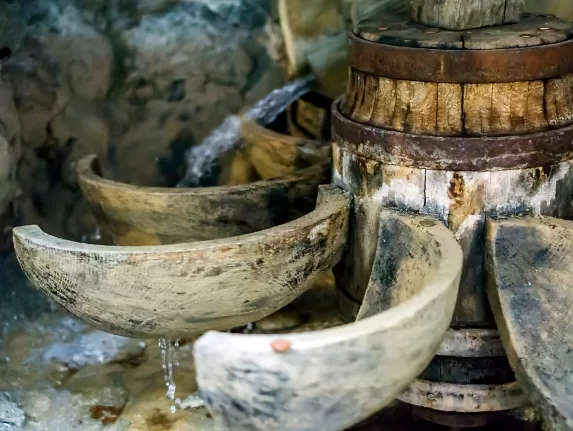
History of Hydropower
Hydropower, or the use of water to generate mechanical power and electricity, has a long and rich history that spans thousands of years and various civilizations.
- Ancient Uses: As far back as ancient times, people started to harness the power of water. Water wheels, for example, enabled the Greeks to grind wheat into flour as early as 400 BC. In these pioneering systems, flowing river water supplied the kinetic energy to spin a wheel, enabling mechanical work such as grinding grain or powering machinery.
- The Middle Ages: The use of water wheels expanded during the Middle Ages, serving various tasks from sawing wood to processing ore. These wheels played a crucial role in the economy, powering many aspects of everyday life.
- The Industrial Revolution: The 18th century brought the Industrial Revolution, and with it, an increased reliance on water power. Factories of the era often sprouted near rivers or streams, where they could use water wheels to power machinery.
- Invention of the Turbine: The water wheel gave way to the turbine in the 19th century. The first practical water turbine came from the mind of French engineer Benoit Fourneyron in 1827, bringing a substantial increase in the efficiency of converting water power to mechanical power.
- Birth of Hydroelectric Power: The first hydroelectric power plant in the world came to life in 1882 on the Fox River in Appleton, Wisconsin, USA. Paper manufacturer H.F. Rogers initiated this plant, later known as the Appleton Edison Light Company, inspired by Thomas Edison’s plans for an electricity-generating station in New York.
- 20th Century Developments: The 20th century saw technological advancements and a growing demand for electricity, leading to the construction of large-scale hydroelectric plants. Built in the 1930s, the Hoover Dam was one of the most ambitious and iconic projects of this period.
- Modern Hydropower: Today, hydropower is an established technology and a significant source of renewable energy. It supplies around 16% of the world’s electricity. The Three Gorges Dam in China holds the title of the world’s largest hydropower plant.
Hydropower is constantly evolving. Innovations are emerging in turbine technology. Small-scale hydropower is growing. New methods are reducing environmental impacts. The world aims for sustainable, reliable energy. Therefore, hydropower will likely stay a key part of our energy mix.
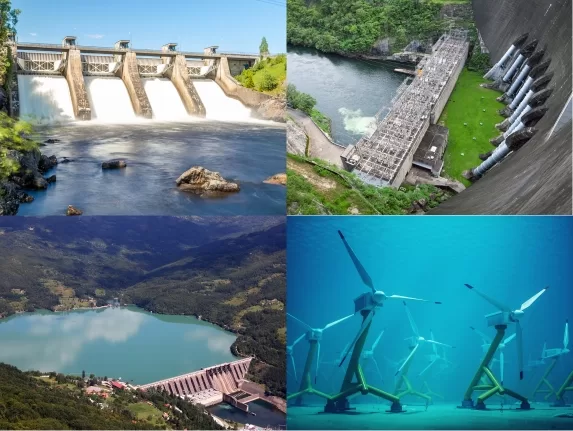
Types of Hydropower Plants
There are several different types of hydropower plants, each suitable for different situations depending on the characteristics of the water source and the energy needs of the region. The main types of hydropower plants include:
- Impoundment Hydropower Plants: Dominating the landscape of hydroelectric power generation, impoundment facilities employ a dam to hold water in a reservoir. When released, this stored water flows through a turbine, spinning it to power a generator and produce electricity. After use, the water returns to the river or stream. The Hoover Dam in the U.S. and the Three Gorges Dam in China exemplify impoundment hydropower plants.
- Diversion or Run-of-River Hydropower Plants: These plants channel a section of a river through a canal or penstock. This setup might not require a dam or may need only a low dam, but electricity generation depends on the river’s flow. These plants, often employed in smaller hydropower installations, present less environmental impact than reservoir dams since they do not flood large areas or drastically disrupt river ecosystems.
- Pumped-Storage Hydropower Plants: Functioning like a battery, these plants store energy as gravitational potential energy of water. They pump water from a reservoir at a lower elevation to another at a higher elevation during low electricity demand periods. When demand rises, water releases back to the lower reservoir, flowing through a turbine. Thus, these plants store power for rapid release when needed.
- Tidal Power Plants: Not as prevalent, tidal power plants leverage daily tides to generate electricity. They represent a form of hydropower where the water source is the ocean. The consistency and reliability of tides make them a predictable energy source.
- In-Stream Hydrokinetic: Emerging technologies are creating electricity by positioning turbines in rivers or streams, eliminating the need for a dam or diversion structure. The flowing water’s kinetic energy spins the turbines to generate electricity. While these systems tend to have a lower environmental impact, they are still under development and less common.
Different hydropower plants have various pros and cons. The best choice hinges on specific site conditions and needs.
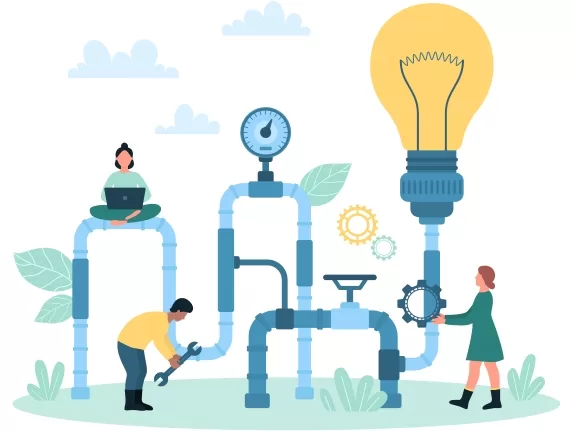
Hydropower Generation Process
The process of generating electricity from hydropower involves several steps. Here’s a simple breakdown:
- Water Storage: The most common type of hydroelectric power plant, known as an impoundment facility, stores water in a reservoir. A dam constructed across a river forms this reservoir, raising the water level and its potential energy. In contrast, run-of-the-river or diversion facilities divert water from a river or stream into a canal or penstock, without significant storage.
- Release of Water: During the generation of electricity, operators release the stored water from the reservoir. The gravitational force from the falling or flowing water turns the blades of a large turbine. The height the water falls – the ‘head’ – and the flow rate play crucial roles in determining the amount of energy produced.
- Energy Conversion: The turning turbine provides mechanical energy to spin a generator. The generator consists of a large magnet surrounded by a wire coil. As the generator spins, it creates a moving magnetic field that drives electrons in the wire, generating an electrical current and electricity.
- Electricity Distribution: The generated electricity moves to a transformer, which increases the voltage for efficient long-distance transport through power lines. This electricity then powers homes, businesses, and industries.
- Water Discharge: After the water has done its job in the turbine, it discharges back into the downstream river. In a run-of-the-river plant, the water flow generally remains unaffected. For a pumped-storage facility, operators can pump the water back to the upper reservoir during periods of low electricity demand, ready for future use.
It’s important to note that the process doesn’t consume water. The same water can be used to generate electricity repeatedly. This makes hydropower a renewable source of energy, as the fuel (water) is not used up in the process.
The above steps are typical for many hydropower plants, but the specifics can vary. For instance, in a pumped storage plant, there’s an additional step of actively pumping water back up into the reservoir during periods of low electricity demand. In a tidal power station, the movement of tides replaces the function of the dam or reservoir.
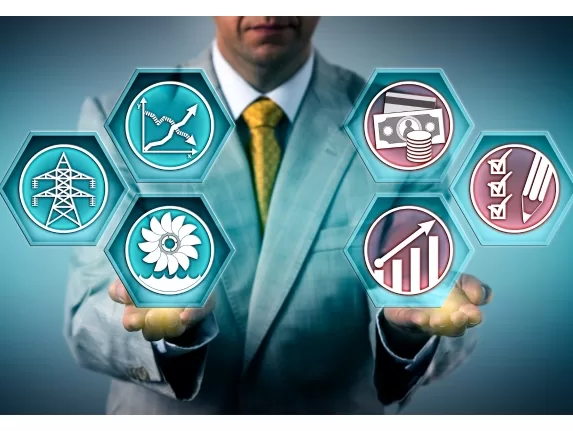
Advantages of Hydropower
Hydropower offers several significant advantages as a source of energy:
- Renewable: Hydropower is a renewable energy source, meaning it’s replenished naturally in a relatively short amount of time. In this case, the water cycle provided by nature ensures that water used to generate power will be replenished.
- Reliable and Predictable: Hydropower is a proven technology that is reliable and predictable. Rivers flow continuously, allowing hydropower plants to generate electricity consistently. Furthermore, because water in dams can be stored, power can be generated when it’s needed.
- Low Greenhouse Gas Emissions: Hydropower produces a negligible amount of greenhouse gases compared to fossil fuel power plants, making it a cleaner choice. Once a hydropower plant is built, it doesn’t require fuel to operate (unlike coal or gas plants), so it doesn’t directly emit CO2 during operation.
- Flexibility: Hydropower plants can quickly adjust to changes in electricity demand by controlling the amount of water that flows through the turbines. This feature makes them ideal for balancing loads and providing backup for intermittent renewable sources like wind and solar.
- Long Life-Span: Hydropower infrastructures such as dams often have long lifespans, with many existing plants having operated for 50–100 years or more. This longevity can offset the high initial costs of construction.
- Economic Benefits: Hydropower projects often provide local economic benefits in the form of jobs and can contribute to the local tax base. In some cases, they also support recreational activities such as boating and fishing, which can boost local tourism.
- Energy Storage: Pumped-storage facilities provide a method of large-scale energy storage that can help integrate variable renewable energy sources like wind and solar into the grid. During periods of low demand, excess electricity is used to pump water back up to the reservoir, effectively storing it for later use.
- Water Supply and Irrigation: Besides power generation, the reservoir behind a dam can also be used for water supply, irrigation, and navigation purposes.
Hydropower has benefits. Yet, it also has downsides. These include altering aquatic ecosystems. It can also force local communities to relocate. Balancing these benefits and drawbacks is a significant challenge in the development of hydropower.
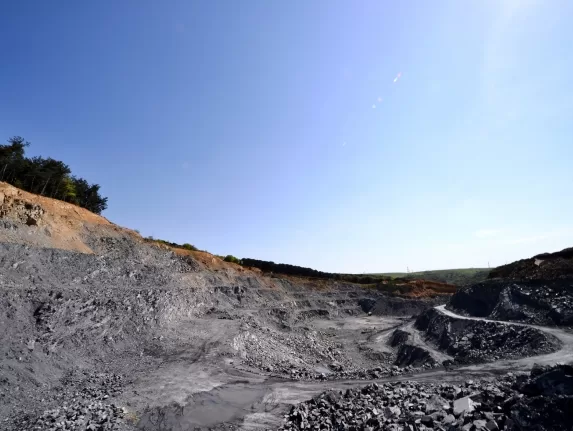
Disadvantages and Environmental Impact of Hydropower
While hydropower provides a renewable source of electricity with low greenhouse gas emissions, it also has some significant drawbacks and environmental impacts. These include:
- Ecological Disruption: Large hydropower projects, especially those involving dams, can significantly disrupt local ecosystems. They can affect water quality and flow, which can have impacts on fish and other aquatic species. In particular, dams can prevent fish migration, which is necessary for many species to reproduce.
- Land Use and Displacement: Hydropower plants, particularly those with large reservoirs, require a significant amount of land, which can result in the displacement of local communities, loss of agricultural land, and disruption of local economies. The construction of the Three Gorges Dam in China, for example, resulted in the displacement of over a million people.
- Greenhouse Gas Emissions from Reservoirs: While the operation of hydropower plants typically has low CO2 emissions, reservoirs, especially in tropical areas, can produce significant amounts of methane, a potent greenhouse gas. This is because plant material in the flooded areas decomposes without oxygen, releasing methane.
- Risk of Catastrophic Failure: Dams can fail, often with disastrous results. This can be due to poor construction, lack of maintenance, or external events like earthquakes. A dam failure can result in significant downstream flooding.
- Water Loss from Evaporation: In areas with hot climates, reservoirs can lose significant quantities of water to evaporation, which can be a concern in water-scarce regions.
- High Initial Costs: The construction of a hydropower plant, especially a large-scale dam, involves high initial capital costs. However, operational costs are relatively low, and the facilities have long lifespans.
- Dependent on Rainfall Patterns: Hydropower generation is dependent on precipitation and water flow. Changes in these patterns due to climate change could affect the reliability of hydropower.
- Siltation and Erosion: Dam reservoirs can fill with sediment over time, reducing storage capacity and the dam’s useful lifespan. Dams can also cause downstream erosion by preventing the natural transport of sediment along the river.
- Impact on Human Health: Stagnant reservoir water can lead to the increase of disease vectors like mosquitoes, increasing the risk of diseases such as malaria in certain areas.
It’s crucial to conduct thorough environmental and social impact assessments before proceeding with a hydropower project. Advances in technology and design, as well as better regulatory frameworks, can help mitigate some of these issues. Fish ladders can help migratory fish bypass a dam. Sediment management strategies can tackle siltation issues.
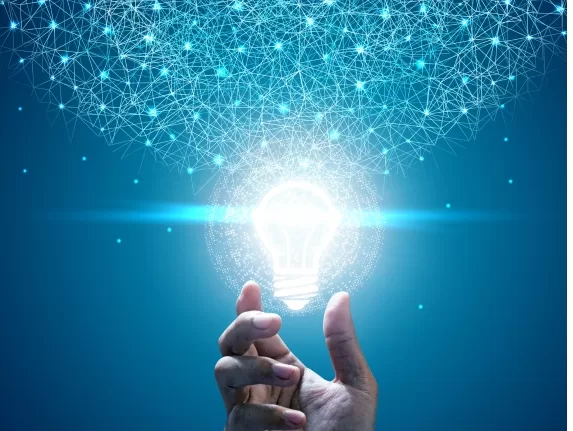
Innovations in Hydropower
While hydropower is a mature technology, there are ongoing innovations to make it more efficient, sustainable, and less impactful on the environment. Some key areas of innovation in the hydropower sector include:
- Advanced Turbines: Engineers are crafting new turbine designs to increase efficiency and decrease environmental impacts. A prime example is the development of fish-friendly turbines, which allow fish to pass through with less harm, addressing a significant environmental concern linked to hydropower.
- In-Stream Hydrokinetic Technology: Different from traditional hydropower that depends on the potential energy of stored water, in-stream hydrokinetic technology captures the kinetic energy of flowing water in rivers, tides, or man-made channels to generate electricity. This approach requires no dams or diversions, leading to less environmental impact.
- Pumped-Storage Hydropower: While not a novel concept, innovators are refining the efficiency and capabilities of pumped-storage hydropower. This form of energy storage helps balance the grid and integrates more variable renewable energy sources like wind and solar.
- Small-Scale and Low-Impact Hydropower: Progress is underway on low-impact, small-scale hydropower systems suitable for remote or off-grid locations. These systems offer a renewable power source with less environmental and social impact than large-scale dams.
- AI and Machine Learning: Industry players are employing these technologies to optimize hydropower plant operations, predict water flows and electricity demand, and enhance maintenance schedules. This application can boost efficiency, cut costs, and reduce environmental impact.
- Advanced Materials: The integration of advanced materials in turbine construction can boost efficiency, lessen maintenance needs, and prolong the lifespan of the equipment.
- Climate Change Adaptation: Given the impact of changing precipitation patterns on hydropower production, researchers are working on improved forecasting models and more flexible hydropower systems that can adjust to changing water availability.
- Environmental Design: Cutting-edge design strategies aim to harmonize hydropower facilities with the environment, minimizing disruptions to ecosystems and local communities.
These innovations, along with supportive policy and regulatory frameworks, can help hydropower continue to play a vital role in the global energy mix in a sustainable and environmentally responsible manner.
Hydropower Around the World
Hydropower is a globally important source of renewable energy. It plays a significant role in the energy mix of many countries due to its reliability and low operational costs. Here’s a snapshot of the role and status of hydropower in various parts of the world :
- China: China is the largest producer of hydroelectricity in the world. It’s home to the largest hydropower project, the Three Gorges Dam, along the Yangtze River, which has a capacity of around 22.5 gigawatts (GW). China has been adding more hydropower capacity as part of its strategy to reduce its reliance on coal and cut greenhouse gas emissions.
- Canada: Canada is the second-largest producer of hydropower globally. It has numerous large hydroelectric plants, and hydroelectricity accounts for a significant portion of Canada’s total electricity generation. The Churchill Falls Generating Station in Labrador is one of Canada’s largest hydroelectric power stations.
- Brazil: Brazil generates a large proportion of its electricity from hydropower, thanks to its extensive river network and high rainfall. The Itaipú Dam on the border with Paraguay is the second-largest hydroelectric power plant in the world, with a capacity of 14 GW.
- United States: The U.S. has a diverse energy mix, and hydropower is a significant part of it. The Grand Coulee Dam on the Columbia River is one of the largest hydropower facilities in the U.S. There’s also a growing interest in small-scale, low-impact hydropower systems and pumped-storage facilities.
- Norway: Norway generates virtually all its electricity from hydropower, thanks to its mountainous terrain and abundant water resources. It’s also a leader in developing pumped-storage technology.
- India: India has a diverse energy mix, but hydropower has traditionally played a crucial role. The Bhakra Dam and Tehri Dam are among the largest hydroelectric projects in India.
In many other countries, both developing and developed, hydropower is a crucial part of the energy mix. It plays a vital role in providing access to electricity, supporting economic development, and helping countries reduce their carbon footprints. Large-scale hydroelectric projects can impact the environment and society. Because of this, sustainability is a growing focus. Technological innovation can help. So can better planning and project management.

Policy and Regulation in Hydropower
Policies and regulations play an important role in the development, operation, and decommissioning of hydropower projects. They can have a major influence on the economic feasibility of projects, their environmental impact, and their social acceptability. The specifics of hydropower policy and regulation can vary greatly between countries and regions, but some general aspects include:
- Planning and Licensing: Many countries have a process for planning and licensing new hydropower projects. This often involves assessing the technical feasibility of the project, its economic viability, and its potential environmental and social impacts. The process usually includes a public consultation period where different stakeholders can voice their concerns and objections.
- Environmental Regulations: Most countries have laws and regulations to protect the environment, many of which apply to hydropower projects. These could relate to water quality, fish migration, protection of wildlife habitats, or the preservation of certain landscapes. Compliance with these regulations is often a requirement for the granting of a license to operate.
- Grid Access and Pricing: Hydropower producers often need to negotiate contracts with utilities or other electricity buyers. In some cases, there may be government regulations that guarantee hydropower producers access to the grid and set the price they receive for their electricity. This is known as a feed-in tariff and is used in some countries to promote renewable energy.
- Safety Regulations: Hydropower projects, particularly large dams, can pose significant safety risks. As such, there are usually strict regulations regarding their design, construction, and operation to minimize these risks. These could include requirements for regular safety inspections and the development of emergency action plans.
- Climate Change Policy: Given the potential of hydropower to contribute to greenhouse gas reduction efforts, many climate change policies and regulations affect the sector. For example, hydropower projects may be eligible for carbon credits under certain emission trading schemes.
- Social Impact Regulations: Many countries have regulations designed to minimize the social impact of hydropower projects. These might involve requirements for resettlement and compensation of displaced people, consultation with local communities, or measures to protect indigenous rights.
The exact nature of these regulations and policies will vary depending on local laws, regional guidelines, and international agreements. Supportive, clear, and fair regulations are crucial for sustainable hydropower development. Yet, the sector also needs flexibility. It must adapt to changes in technology, environmental standards, and society’s expectations.
Future of Hydropower
The future of hydropower involves both opportunities and challenges, and the path forward includes technological advancements, increased sustainability, and adaptation to changing environmental conditions.
- Technological Advancements: There’s a lot of potential for further technological advancements in hydropower. From more efficient turbines to fish-friendly designs, and from advanced materials to artificial intelligence and machine learning for optimizing operations, technology will continue to shape the future of hydropower.
- Small and Distributed Hydropower Systems: As the world seeks to reduce the environmental impact of energy production, there’s growing interest in small, low-impact hydropower systems. These can be more easily integrated into the existing environment, cause less disruption to local ecosystems and communities, and are particularly suited to providing power in remote or off-grid locations.
- Pumped Storage and Grid Stability: As the adoption of intermittent renewable energy sources like solar and wind continues to grow, the importance of energy storage and grid stabilization becomes more pronounced. Pumped-storage hydropower, which can act like a giant battery, storing power when demand is low and releasing it when demand is high, will likely play an increasingly important role in maintaining grid stability.
- Climate Change Adaptation: As climate change alters precipitation patterns and water availability, the hydropower sector will need to adapt. This could involve changes in dam and reservoir management, the use of advanced forecasting tools, and increased operational flexibility.
- Sustainable Practices: There’s an increasing recognition of the need for more sustainable and responsible practices in the hydropower sector. This includes better planning and management to reduce environmental and social impacts, more comprehensive stakeholder consultation processes, and measures to mitigate issues like fish migration, water quality, and greenhouse gas emissions from reservoirs.
- Renewed Investment: As part of global efforts to reduce carbon emissions and combat climate change, there’s likely to be renewed investment in hydropower, particularly in developing countries where much of the hydropower potential remains untapped.
- Policy and Regulatory Changes: Policies and regulations will also shape the future of hydropower, as governments seek to balance the need for clean energy with environmental and social considerations. This could include more stringent environmental regulations, changes to pricing and grid access rules, and policies aimed at promoting renewable energy and reducing greenhouse gas emissions.
In summary, while hydropower is a mature technology, there is still much room for growth, innovation, and improvement. Hydropower can remain a vital part of the global energy mix. This can be achieved through careful attention to sustainability, environmental factors, and social considerations.
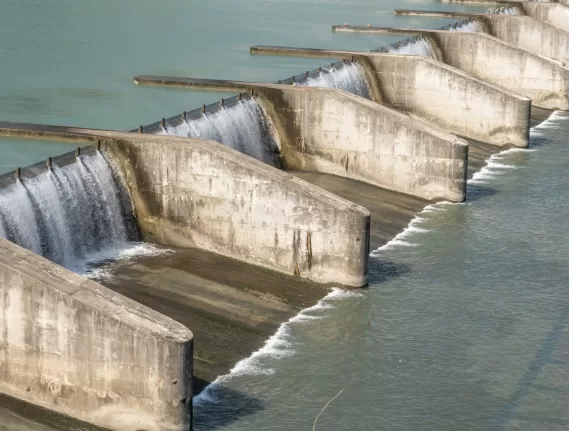
Small-Scale Hydropower
Small-scale hydropower, also known as micro or mini hydropower, refers to the generation of electricity using hydropower technology on a scale smaller than traditional large-scale hydroelectric dams. The definitions of what constitutes small-scale hydropower can vary, but it is generally considered to be systems with a capacity of up to 10 megawatts (MW).
Small-scale hydropower systems have several characteristics that distinguish them from their larger counterparts:
- Lower Environmental Impact: Small-scale hydropower systems typically have a lower environmental impact than large-scale projects. They generally do not require large reservoirs to operate, and therefore do not cause extensive flooding or displace local populations. Also, the smaller the scale, the lesser the effect on local wildlife and ecosystems.
- Suitable for Rural and Remote Areas: Small-scale hydropower can be an excellent solution for rural and remote communities. These systems can be installed in isolated areas where grid access is difficult or expensive, providing reliable electricity to communities that might not otherwise have it.
- Lower Capital Costs: While the cost per kilowatt can be higher for small-scale systems, the overall capital cost is often much lower than for large-scale projects due to the smaller size and less complex nature of the projects. This can make them more accessible for communities or businesses that want to invest in renewable energy but do not have the resources for a large-scale project.
- Community Ownership: Small-scale hydropower projects can often be owned and operated by local communities, giving them control over their own energy production and helping to keep profits within the community.
- Quick Installation and Commissioning: Due to their size, small-scale hydropower plants can be installed and become operational relatively quickly.
Small-scale hydropower systems come in various forms, but two of the most common are run-of-river systems and in-stream technology:
- Run-of-river systems do not store water in a reservoir, but rather divert a portion of a river’s flow through a channel or pipeline to spin a turbine before returning it to the river downstream.
- In-stream (or free-flow) technologies are even less intrusive. They generate electricity by placing turbines directly in rivers, tidal areas, or ocean currents, capturing the energy of the moving water.
In conclusion, while small-scale hydropower may not produce as much electricity as large-scale projects, it still plays a crucial role in global energy production, especially in rural, remote, or off-grid locations. It offers a reliable and sustainable source of electricity with lower environmental and social impacts compared to large-scale hydropower projects.
Hydropower and Climate Change
Hydropower and climate change share a complex relationship. On one hand, hydropower can contribute to mitigating climate change by providing a renewable, low-carbon source of electricity. On the other hand, climate change can significantly impact the availability of water resources and thus the potential for hydropower generation. Moreover, hydropower infrastructure itself, particularly in the form of large reservoirs, can have implications for greenhouse gas emissions.
Mitigating Climate Change
As a renewable energy source, hydropower plays a significant role in mitigating climate change. Hydropower plants emit considerably less greenhouse gases than fossil fuel power plants, making them a preferred choice for sustainable, clean energy. Moreover, hydropower facilities, particularly pumped-storage plants, can help integrate variable renewable sources like wind and solar into the power grid, thus further facilitating the transition to a low-carbon energy system.
Impacts of Climate Change on Hydropower
However, climate change can significantly impact hydropower production. Changes in precipitation patterns, reduced snowpack, increased frequency and severity of droughts, and shifts in the timing and volume of runoff can all affect the availability of water for hydropower. This can result in decreased reliability and predictability of hydropower generation, and increased seasonal variability. In some regions, climate change might increase the potential for hydropower as rainfall patterns change, but in others, particularly those already experiencing water scarcity, it might reduce hydropower potential.
Hydropower’s Role in Greenhouse Gas Emissions
While hydropower generally has lower lifecycle greenhouse gas emissions than fossil fuel power plants, it is not completely emission-free. Large reservoirs, particularly in tropical regions, can emit significant amounts of methane, a potent greenhouse gas, due to the decay of organic material in the water. These emissions can vary greatly depending on the specific characteristics of each reservoir, and there is ongoing research to better quantify them and find ways to reduce them.
In summary, while hydropower is an important tool in efforts to reduce greenhouse gas emissions and mitigate climate change, it is also vulnerable to the impacts of climate change, and it has its own environmental footprint that needs to be carefully managed. Moving forward, the challenge will be to maximize the benefits of hydropower in a climate-constrained world while minimizing its environmental impact.
Social Impact of Hydropower
Hydropower projects, especially large-scale ones, can have profound social impacts. Hydropower can boost economic development and reduce poverty. It can provide reliable electricity and jobs. But, if not managed well, it can also cause social disruption and inequality. Some of the key social impacts associated with hydropower include:
- Resettlement and Displacement: The creation of large reservoirs for hydropower projects often requires the displacement and resettlement of local communities. This can lead to loss of homes, lands, and livelihoods. The process can be traumatic and disruptive, particularly if people feel they have not been adequately compensated or supported during the transition.
- Loss of Cultural Heritage: The flooding of lands for reservoirs can also lead to the loss of cultural and historical sites, which can have profound impacts on local and indigenous communities.
- Changes to Livelihoods: The alteration of river flows can affect livelihoods based on fishing, farming, and other river-dependent activities. Changes in water quality and quantity can also affect access to clean water for drinking and irrigation.
- Equity and Benefit Sharing: Often, the benefits of hydropower projects, such as electricity and revenues, are not evenly distributed. Those who bear the brunt of the negative impacts, such as displacement or environmental degradation, may not reap the benefits of the project. This can exacerbate social inequalities and lead to social tension.
- Public Health Impacts: In some cases, the creation of reservoirs can lead to public health issues. For instance, standing water can become breeding grounds for mosquitoes, increasing the risk of malaria and other vector-borne diseases.
To address these concerns, it’s important that hydropower projects include comprehensive social impact assessments, public consultations, and fair compensation practices. International standards guide the management of hydropower’s social impacts. The World Bank and the International Hydropower Association developed these. They focus on the consent of local communities. They also demand fair compensation and sharing of benefits. Lastly, they aim to improve or restore the lives and incomes of affected people.
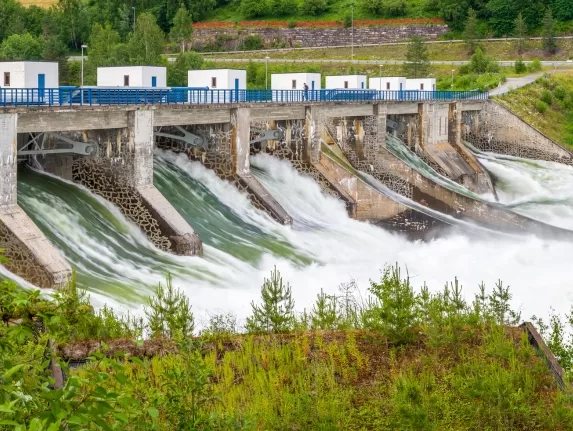
Hydropower and Biodiversity
Hydropower projects can have significant impacts on biodiversity, which need to be carefully managed and mitigated. These impacts vary depending on the scale and type of the hydropower project, the specifics of the local environment, and how the project is planned and managed.
- Impacts on Aquatic Species: Dams can disrupt the migration routes of fish and other aquatic species. They can also change the water temperature and oxygen levels in rivers, which can affect the survival of certain species. On the other hand, reservoirs can also create new habitats for certain types of fish and other aquatic life, although these species may not be native to the area and can affect the local ecological balance.
- Changes to River Flow: The alteration of natural river flow patterns can affect the life cycles of many species. This can lead to changes in the timing and extent of flooding, which can affect the breeding and feeding of certain species, as well as the health of wetlands and floodplain forests.
- Land Conversion and Habitat Loss: The construction of hydropower facilities and reservoirs can lead to the conversion of land and loss of habitats. This can result in the loss of plant and animal species and decrease overall biodiversity.
- Fragmentation of Habitats: Dams and reservoirs can also fragment habitats, isolating populations of species on either side of the dam. This can lead to a reduction in genetic diversity and an increase in the vulnerability of species to environmental changes and other threats.
- Impacts on Terrestrial Wildlife: The construction and operation of hydropower facilities can disturb terrestrial wildlife, through noise, human activity, and changes to the landscape.
In recent years, there has been increasing recognition of the need to minimize the impacts of hydropower on biodiversity. There are various strategies and technologies that can help mitigate these impacts, such as fish ladders or lifts to aid fish migration, environmental flow releases to maintain river health, and careful site selection to minimize habitat loss. In addition, comprehensive environmental impact assessments, long-term monitoring, and adaptive management can help ensure that biodiversity impacts are minimized and mitigated throughout the lifecycle of a hydropower project.
Hydropower Economics and Financing
Hydropower economics and financing encompass a broad range of topics, from the cost of developing and constructing a hydropower project to its long-term profitability and economic impact. Here are a few key points to consider:
- Capital Costs: The initial capital costs of building a hydropower plant can be substantial. These costs include planning, feasibility studies, design, construction, and environmental mitigation measures. The costs vary depending on the specific circumstances of the project, including its size, the complexity of the site, and the local regulatory environment.
- Operational Costs: Once built, hydropower plants typically have low operational and maintenance costs, especially when compared to fossil fuel power plants. This is because they do not require fuel to operate, and the technology used is generally reliable and long-lasting.
- Lifespan and Returns on Investment: Hydropower plants are long-term investments. They can operate for many decades (even up to a century), providing a steady return on investment over time. This long lifespan can make hydropower economically attractive, despite the high initial capital costs.
- Revenue Streams: In addition to generating electricity, some hydropower plants can provide additional revenue streams. For example, pumped storage plants can earn money by providing grid stability services, and reservoirs can support income-generating activities such as fishing, irrigation, and tourism.
- Financing Challenges: Despite the long-term economic benefits, the high upfront costs and long payback periods can make it challenging to secure financing for hydropower projects. These challenges can be particularly acute in developing countries, where access to capital is often limited. Risk perceptions, associated with factors such as potential cost overruns, regulatory changes, and environmental and social impacts, can also hinder financing.
- Economic Impact: Hydropower projects can have significant local and regional economic impacts. They can create jobs, stimulate economic activity, and provide a reliable source of electricity, which can support further economic development. However, these benefits need to be weighed against potential costs, such as environmental and social impacts.
- Policies and Incentives: Government policies and incentives can greatly affect the economics of hydropower. These can include renewable energy targets, feed-in tariffs, tax incentives, carbon pricing, and subsidies.
In summary, hydropower can be economically challenging, especially in initial costs. However, it offers benefits like reliable, low-cost power and extra revenue. With thoughtful planning, sustainable methods, and fitting policies and finance, we can increase its economic gains and reduce risks.
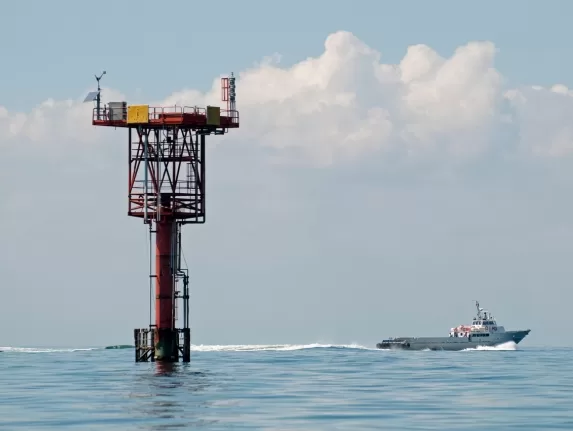
Tidal and Wave Energy
Tidal and wave energy are types of marine or ocean energy. They fall under renewable energy sources. Both come from water movement, but they harness this energy differently. The technologies to capture this energy also differ.
- Tidal Energy: Tidal energy is generated from the natural rise and fall of coastal sea levels caused by the gravitational pull of the moon and the sun. There are two types of tidal energy: tidal streams and tidal range energy.
- Tidal Streams: These are fast-flowing currents created by tides, and can be harnessed using underwater turbines, similar to wind turbines. When the tide flows, it causes the turbine blades to rotate, which drives a generator to produce electricity.
- Tidal Range Energy: This involves capturing the potential energy created by the difference in height (or “head”) between high and low tides. The most common way to harness tidal range energy is through the construction of tidal barrages, which are similar to hydroelectric dams but operate on a much shorter timescale, generating power as the tides rise and fall.
- Wave Energy: Wave energy, on the other hand, is generated by the movement of waves on the surface of the ocean. This energy is captured by wave energy converter devices that are either located on the shoreline or offshore. As waves pass these devices, the movement is converted into mechanical energy, which can then be converted into electricity.
While both tidal and wave energy have significant potential as renewable energy sources, they are currently much less widely used than other forms of renewable energy, such as solar or wind power. This is partly because the technology is still in relatively early stages of development, and costs are currently higher than for more established technologies. Other challenges include the harsh marine environment, which can cause wear and tear on equipment, and potential environmental impacts, such as effects on marine life and ecosystems.
However, the predictability of tides and the near-constant availability of wave energy in certain locations make these attractive options for future energy development. Research and development are ongoing to improve the efficiency, durability, and environmental compatibility of tidal and wave energy technologies.
Hydropower and Grid Stability
Hydropower can play a vital role in maintaining the stability of the electrical grid. Grid stability requires a balance between electricity supply and demand, and involves maintaining the frequency of the grid within prescribed limits. Here’s how hydropower contributes to grid stability:
- Load Balancing: Hydropower plants can quickly ramp up or down their electricity production in response to changes in demand. This makes them well suited for load balancing and for providing ancillary services such as frequency control and spinning reserve.
- Peaking Power: Hydropower plants, particularly those with reservoir storage, can serve as ‘peaking power’ plants. This means they can be turned on during periods of high electricity demand, helping to prevent overloads and blackouts.
- Integration of Variable Renewables: The rapid response characteristics of hydropower make it an ideal partner for variable renewable energy sources like wind and solar. When the wind isn’t blowing or the sun isn’t shining, hydropower plants can quickly increase their output to fill the gap. Conversely, when wind or solar production is high, hydropower production can be dialed back, and in the case of pumped storage plants, they can even use excess electricity to pump water uphill for storage and later use.
- Black Start Capability: Some hydropower plants are capable of ‘black start’, meaning they can restart their own operation without relying on the external grid, and then help to restore power to the grid following a blackout.
- Pumped Storage: Pumped storage hydropower plants are especially valuable for grid stability. They work like a battery, storing energy when demand is low and releasing it when demand is high. They do this by using surplus electricity to pump water to an upper reservoir, which can then be released to generate electricity when needed.
Hydropower has benefits but also poses challenges. It can improve grid stability, yet too much can cause issues. For instance, droughts can limit hydropower availability, affecting grid stability. Also, hydropower facilities need careful coordination with the rest of the grid to prevent stability problems.
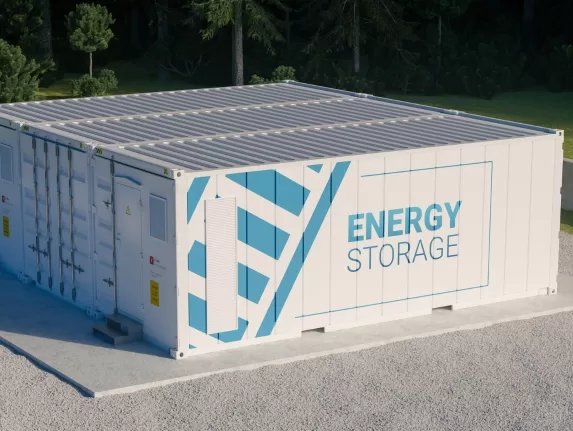
Hydropower and Energy Storage
Hydropower has a unique and valuable role in energy storage, particularly through a technology known as pumped storage. Here’s how it works:
Pumped Storage Hydropower (PSH): PSH stands as the most prevalent form of grid energy storage today. It functions much like a battery, leveraging water and gravity for energy storage and release. During low electricity demand periods, excess electricity from the grid pumps water from a lower to an upper reservoir. Conversely, during high demand periods, operators release the stored water to flow back through turbines, generating electricity.
PSH boasts about 70-80% efficiency, implying that for every 100 units of electricity used to pump the water uphill, approximately 70-80 units can be generated on the way back down. Despite this energy loss, PSH remains one of the most cost-effective large-scale storage technologies. It can store vast amounts of energy for extended periods and initiate electricity generation swiftly when needed.
PSH’s capacity to store energy and respond quickly to electricity demand shifts makes it a vital tool for maintaining grid stability and integrating variable renewable energy sources like wind and solar power. During periods of strong winds or bright sunshine, when electricity production exceeds grid needs, the surplus power can be directed to pump water uphill. Then, when wind subsides or the sun sets, the stored water can be released to generate electricity.
However, developing PSH plants can pose challenges. They necessitate suitable sites with significant elevation differences, and creating new reservoirs can lead to considerable environmental and social impacts. Consequently, many PSH projects focus on enhancing existing hydropower plants or using man-made structures or natural features, such as abandoned mines, to minimize these impacts.
It’s important to remember that conventional (non-pumped) hydropower plants also offer a form of energy storage. The water in a hydropower reservoir represents potential energy that can be released on demand, providing a flexible and reliable electricity source. However, the storage capacity and operational flexibility of these plants generally fall short compared to PSH plants.
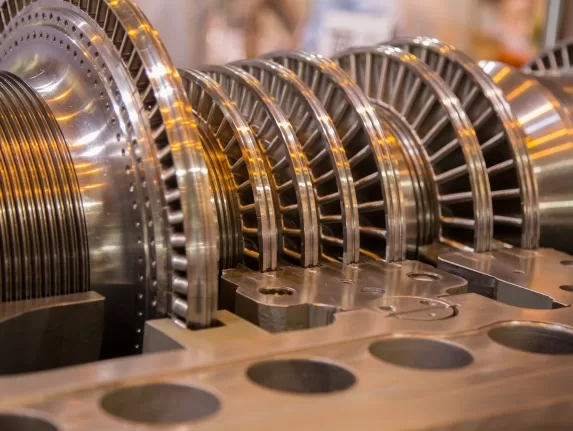
Hydroelectric Turbine Technologies
Hydroelectric turbines are the heart of a hydropower plant. They convert the kinetic and potential energy of falling or flowing water into mechanical energy, which is then used to generate electricity. There are several different types of hydroelectric turbines, each suited to different conditions and applications. Here’s an overview:
- Impulse Turbines: In these turbines, water is directed at the turbine blades from a high-pressure nozzle, causing the blades to rotate. The most common type of impulse turbine is the Pelton wheel, which features a series of cup-like blades around the edge. Impulse turbines are typically used in high head, low flow applications.
- Reaction Turbines: In reaction turbines, water flows over the blades, producing a lift force that causes the blades to move. Unlike impulse turbines, both the pressure and the kinetic energy of the water contribute to the generation of power. There are several types of reaction turbines, including Francis and Kaplan turbines:
- Francis Turbines: These are the most common type of hydroelectric turbine and are used in a wide range of head and flow conditions. They have a radial-inflow design, with water entering the turbine in a radial direction and exiting in an axial or radial direction.
- Kaplan Turbines: These are a type of propeller turbine with adjustable blades. They are used in low head, high flow conditions. The ability to adjust the blade angle allows them to operate efficiently over a wide range of flow conditions.
- Turbine-Generator Units: In most hydropower plants, the turbine is directly coupled to a generator, which converts the mechanical energy into electrical energy. The type and design of the generator depend on various factors, including the size of the hydropower plant and the frequency of the electricity grid.
- Emerging Technologies: New turbine technologies are also being developed to harness the energy from water in more efficient and environmentally friendly ways. These include hydrokinetic turbines, which can capture the energy from free-flowing water without the need for a dam or a significant drop in height, and fish-friendly turbines, which are designed to reduce the impact on aquatic life.
In conclusion, the choice of turbine technology in a hydropower plant depends on the specific characteristics of the site, including the head (height of the water drop), the flow rate, and the environmental considerations. The ongoing development of new turbine technologies offers the potential for more efficient and sustainable hydropower generation in the future.
Environmental Management in Hydropower Projects
Environmental management is a crucial aspect of hydropower projects, aiming to minimize the negative impacts and maximize the positive impacts on the environment. A comprehensive environmental management plan for a hydropower project includes the following:
- Environmental Impact Assessment (EIA): An EIA is a systematic process that identifies and evaluates the potential environmental effects of a proposed project. It examines both positive and negative impacts and proposes mitigation measures for any significant adverse impacts. EIAs are usually required by law before major projects can be approved.
- Site Selection and Design: Selecting an appropriate site and designing the project to minimize environmental impact is an essential part of environmental management. This might include careful placement of infrastructure to avoid sensitive habitats, designing facilities to minimize land disturbance and sedimentation, and including features such as fish ladders to allow aquatic creatures to pass dams.
- Construction Management: Construction activities can have significant short-term environmental impacts, including noise, dust, erosion, and habitat disruption. Environmental management during construction might involve measures such as erosion and sediment control, waste management, limiting work during sensitive times (e.g., bird nesting seasons), and training workers in environmental awareness.
- Operation and Maintenance: The operation of a hydropower plant can have ongoing environmental impacts, including changes to water quality and flow patterns, barriers to fish migration, and impacts on terrestrial habitats due to reservoir flooding. Operational environmental management measures might include monitoring and adjusting water flows, maintaining fish passage facilities, and monitoring water quality.
- Decommissioning and Site Restoration: When a hydropower project reaches the end of its life, it must be decommissioned and the site restored. This could involve removing structures, stabilizing landforms, and re-establishing vegetation.
- Stakeholder Engagement: Engaging with stakeholders, including local communities and environmental organizations, is a vital part of environmental management. This can help to identify potential environmental issues, find ways to mitigate impacts, and resolve conflicts.
- Monitoring and Adaptive Management: After the project is completed, ongoing environmental monitoring is crucial. If the environmental impacts turn out to be greater than predicted, or if unforeseen impacts emerge, adaptive management involves changing the project’s operation or mitigation measures in response.
In conclusion, environmental management in hydropower projects involves a comprehensive approach from the planning stage to the decommissioning stage. It is critical to the sustainable development of hydropower resources.
Sustainable Hydropower Practices
Hydropower can play a crucial role in transitioning to a sustainable energy future, but it’s important to mitigate its potential environmental and social impacts. Here are some sustainable practices that can be employed in the development and operation of hydropower projects:
- Comprehensive Planning: Early and comprehensive planning can identify potential environmental and social issues and opportunities for mitigation or enhancement. This includes conducting Environmental Impact Assessments (EIAs) and Social Impact Assessments (SIAs) that analyze the potential impacts of a project and propose ways to minimize negative effects and maximize benefits.
- Water Management: Sustainable water management practices should ensure that dam operations do not drastically alter the natural flow of rivers, which can harm ecosystems and the communities that depend on them. This may involve releasing certain amounts of water at specific times to mimic natural flow patterns.
- Fish Passage: The design of dams should include provisions for fish passage, like fish ladders or fish elevators, which allow fish to migrate up and downstream. This is critical in rivers where fish migration is a key part of the life cycle of local species.
- Sediment Management: Dams can disrupt the natural flow of sediment down a river, which can impact river health and reduce the lifespan of the reservoir. Effective sediment management strategies can mitigate these impacts.
- Local Community Involvement: Engaging local communities from the outset is crucial. This includes involving them in decision-making processes, ensuring their concerns are addressed, and that they share in the benefits of the project, for example through job creation or investment in local infrastructure.
- Renewable Portfolio Standards (RPS): These regulations require utilities to obtain a certain percentage of their power from renewable sources, including hydropower. This encourages the development of hydropower projects, while also incentivizing the use of best practices to minimize environmental impact.
- Decommissioning Outdated Dams: Some older dams may cause more harm than good. Dam removal can often be the best way to restore a river’s ecological health and benefit the communities that depend on the river.
- Green Bonds and Certifications: To promote sustainable practices in the sector, financial instruments like green bonds can be used to fund hydropower projects that meet certain environmental criteria. Additionally, certification schemes can provide an independent assessment of the sustainability of a hydropower project.
Adopting these practices can help ensure that hydropower projects are developed and operated sustainably, providing renewable energy while minimizing negative environmental and social impacts.
Decommissioning of Hydropower Plants
Shutting down a hydropower plant requires careful planning. This involves safely ending operations and often removing facilities. The site may also need restoration. Although this process is complex, expensive, and lengthy, it is a crucial step in a hydropower project’s life cycle. Here are some key aspects to consider:
- Planning and Regulatory Approvals: Decommissioning requires careful planning and often requires regulatory approvals. This involves a detailed understanding of the site’s current and proposed future conditions, the potential environmental and social impacts of decommissioning activities, and the legal and regulatory requirements.
- Environmental Impact Assessment (EIA): An EIA should be conducted to identify the potential environmental impacts of decommissioning and propose mitigation measures. This might involve considerations such as managing sediment that has accumulated behind the dam, protecting aquatic and terrestrial habitats during demolition and removal activities, and restoring river flows and habitats after decommissioning.
- Infrastructure Removal: Decommissioning often involves the removal of infrastructure, including dams, powerhouses, transmission lines, and other facilities. This is a complex task requiring specialized skills and equipment, and it must be done in a way that minimizes safety risks and environmental impacts.
- Site Remediation and Restoration: After the removal of infrastructure, the site often needs to be remediated and restored. This can involve activities such as stabilizing riverbanks, reestablishing vegetation, improving water quality, and in some cases, restoring the river to its natural course.
- Social and Economic Considerations: Decommissioning can have social and economic impacts, such as job losses and changes to local water use, which need to be managed. There may also be opportunities for beneficial reuse of the site, such as for recreation, tourism, or other forms of renewable energy generation.
- Public Engagement: Engaging with stakeholders, including local communities, Indigenous groups, and environmental organizations, is a crucial part of the decommissioning process. This can help to identify issues, develop acceptable solutions, and build support for the project.
- Monitoring and Follow-Up: Once decommissioning is completed, monitoring is usually required to confirm the effectiveness of the remediation and restoration efforts and to identify any need for additional measures.
In some cases, the decision to decommission a hydropower plant may be due to factors such as aging infrastructure, high maintenance costs, environmental impacts, or changing social and economic conditions. In others, it may be more appropriate to upgrade or retrofit the plant to extend its life, improve its performance, or reduce its environmental impact. These decisions need to be made on a case-by-case basis, considering a range of technical, environmental, economic, and social factors.
Water Resource Management in Hydropower
Effective water resource management is crucial in hydropower operations. Hydropower generation depends on the availability and flow of water, and changes in the quantity and timing of water flows can significantly impact power production. Simultaneously, hydropower operations can affect water quality, ecosystems, and the livelihoods of communities that depend on water resources. Here are some key aspects of water resource management in hydropower:
- Water Availability and Demand Forecasting: Predicting water availability is essential for planning and managing hydropower operations. This involves forecasting seasonal and long-term trends in rainfall, snowmelt, and streamflows. At the same time, understanding the demand for water from different sectors (e.g., agriculture, municipal uses, other power plants) is vital to balance competing needs and manage water resources effectively.
- Sustainable Flow Management: Hydropower operations should aim to mimic natural flow patterns as closely as possible to reduce impacts on ecosystems and human communities. This involves managing reservoir storage and water releases to maintain adequate flows during dry periods, prevent flooding during wet periods, and support important ecosystem processes.
- Water Quality Management: Hydropower operations can affect water quality by changing water temperatures, oxygen levels, and sediment loads. Effective management strategies, like aeration of releases or managing the timing of reservoir drawdown, can help maintain water quality standards and protect aquatic life.
- Climate Change Adaptation: Climate change poses significant challenges for water resource management in hydropower. Changes in precipitation patterns, increased evaporation rates, and changing snowmelt patterns can alter water availability for hydropower generation. Adapting to these changes requires robust climate modelling, scenario planning, and flexible management strategies.
- Stakeholder Engagement: The effective management of water resources requires involving all stakeholders, including other water users, local communities, government agencies, and environmental groups. This can help to identify potential conflicts, develop acceptable solutions, and build support for water management decisions.
- Transboundary Water Management: Many rivers cross political boundaries, and their water resources are shared by multiple countries. International cooperation and agreements are essential for managing these transboundary waters and ensuring equitable access to water resources for hydropower and other uses.
By integrating these elements, hydropower operators can sustainably manage water resources, balancing the need for power generation with the need to protect water quality, support healthy ecosystems, and respect the rights and needs of other water users.
Hydropower and Renewable Energy Integration
Hydropower plays a key role in the integration of renewable energy sources into the grid. As the share of variable renewable energy (VRE) sources like wind and solar increases, the flexible and dispatchable nature of hydropower can provide valuable services to maintain grid stability and reliability. Here’s how this integration works:
- Grid Stability and Balancing: Wind and solar power are intermittent, meaning they only produce electricity when the wind is blowing or the sun is shining. Hydropower, on the other hand, can generate power almost continuously, making it an excellent complement to these sources. Additionally, hydropower plants can quickly adjust their output to balance fluctuations in power supply and demand, which helps to maintain grid stability.
- Energy Storage: Pumped storage hydropower plants, which use excess electricity to pump water uphill into a reservoir, can store large amounts of energy for later use. This stored energy can be released when electricity demand is high or when other renewable sources are not generating power. It acts like a battery, smoothing out the supply of renewable energy and ensuring a reliable electricity supply.
- Load Following and Peaking Services: Hydropower plants can quickly ramp up or down their power output, allowing them to follow changes in electricity demand (load following) and provide power during periods of peak demand (peaking services). This flexibility is crucial for integrating large amounts of variable renewable energy into the grid.
- Reducing Greenhouse Gas Emissions: Hydropower is a low-carbon energy source. By providing flexible power and storage services that facilitate the integration of wind and solar power, hydropower can help to reduce the reliance on fossil fuel power plants and lower overall greenhouse gas emissions from the power sector.
- Market and Policy Measures: Certain market mechanisms and policy measures, such as renewable portfolio standards, feed-in tariffs, and power purchase agreements, can incentivize the integration of hydropower with other renewables. These mechanisms provide financial rewards for the production of renewable energy and the provision of grid services.
In conclusion, the synergy between hydropower and other renewable energy sources can be leveraged to create a more resilient, flexible, and sustainable energy system.
Case Studies of Hydropower Projects
There are many notable hydropower projects around the world that exemplify various aspects of hydropower development, from large-scale projects that have transformed national energy systems to smaller projects that have brought power to remote communities. Here are a few examples:
- The Hoover Dam (USA): Completed in 1936, the Hoover Dam was a monumental engineering achievement and one of the first major hydropower projects in the United States. Located on the Colorado River, it provides electricity for several states, but has also faced criticism for its environmental impacts.
- The Three Gorges Dam (China): This is the world’s largest power station in terms of installed capacity (22.5 GW). While the dam has significantly contributed to China’s energy needs and has helped control flooding on the Yangtze River, it has also been the subject of controversies related to environmental impact, displacement of local communities, and archaeological site preservation.
- The Akosombo Dam (Ghana): Built in the 1960s, the Akosombo Dam created Lake Volta, the world’s largest artificial lake by surface area. The dam has played a significant role in Ghana’s economic development by providing electricity for industries and homes, but it has also faced criticism for its social and environmental impacts.
- The Snowy Mountains Scheme (Australia): This is a complex multi-reservoir hydropower system designed not only for power generation but also for irrigation purposes. It’s considered a feat of engineering and an important part of Australia’s cultural and environmental heritage.
- The La Yesca Dam (Mexico): Completed in 2012, this dam is notable for its environmental management practices, including efforts to preserve aquatic ecosystems and mitigate impacts on local communities.
- The Agua Zarca Project (Honduras): This project has been a focal point for debates about the rights of Indigenous peoples in the development of hydropower. The murder of environmental activist Berta Cáceres, who was protesting against the project, has led to international scrutiny of the project and its social impacts.
- The Iffezheim Hydropower Plant (Germany): This run-of-the-river plant on the Rhine includes innovative fish passage facilities, reflecting growing emphasis on minimizing the ecological impact of hydropower projects.
Each of these projects offers valuable lessons for the future development of hydropower, highlighting the need for careful planning and management to balance the benefits of renewable energy generation with environmental and social considerations.
Hydropower Reservoirs and Methane Emissions
While hydropower is generally considered a renewable and clean energy source, it’s not entirely without environmental impacts. One such issue is the production of greenhouse gases (GHGs), including methane, from hydropower reservoirs.
Methane is produced when organic matter – such as plants and algae – decomposes under water in the absence of oxygen, a process known as anaerobic decomposition. This can occur in the deep waters of hydropower reservoirs, especially in tropical regions where warm temperatures enhance the growth of organic matter and speed up decomposition.
Here’s why methane emissions from hydropower reservoirs are a concern:
- Methane’s Global Warming Potential: Methane is a potent greenhouse gas, with a global warming potential many times greater than that of carbon dioxide over a 20-year time frame. Although the amount of methane produced by hydropower reservoirs is small compared to other human sources (like agriculture and fossil fuel use), it can still contribute to climate change.
- Geographical and Temporal Variability: Methane emissions from hydropower reservoirs can vary widely depending on factors like the age of the reservoir, the amount and type of organic matter present, water temperature, and the design and operation of the hydropower plant. For example, reservoirs in tropical regions, where plant growth is rapid, tend to produce more methane than those in temperate or arctic regions.
- Impact on Hydropower’s Green Image: The issue of methane emissions can affect the perception of hydropower as a ‘clean’ energy source. It’s therefore important for the hydropower industry to address this issue through research, monitoring, and mitigation measures.
Potential mitigation strategies include:
- Reservoir Management: Techniques such as aerating the reservoir water, controlling nutrient levels to limit plant and algal growth, and avoiding flooding areas with a large amount of organic matter can help to reduce methane production.
- Hydropower Plant Design and Operation: Some research suggests that certain design features and operating practices, such as avoiding deep water outlets, can help to limit the amount of methane that is released to the atmosphere.
- Carbon Offsetting: In cases where methane emissions cannot be completely avoided, hydropower projects can offset their emissions by investing in other greenhouse gas reduction initiatives.
While further research is needed to fully understand and mitigate the issue of methane emissions from hydropower reservoirs, it’s clear that this issue needs to be considered in the planning, design, and operation of hydropower projects.
Impact of Climate Change on Hydropower Generation
Climate change has significant implications for hydropower generation. Hydropower facilities rely on water flow for power generation, and changes in rainfall patterns, snowmelt, and evaporation rates can all impact the availability and predictability of this water. Here’s how climate change can affect hydropower generation:
- Altered Rainfall Patterns: Climate change can lead to changes in rainfall patterns, with some areas receiving more rain and others less. This can impact the inflow of water into reservoirs and rivers, affecting the power generation capacity of hydropower plants.
- Shifts in Snowmelt Timing: In regions where a significant portion of water flow comes from melting snow and glaciers, warming temperatures can cause earlier and faster snowmelt. This could shift the timing of peak water flows, leading to potential mismatches between power supply and demand.
- Increased Evaporation: Rising temperatures can increase evaporation rates from reservoirs, reducing the amount of water available for power generation.
- Increased Frequency and Severity of Droughts: Climate change can also increase the frequency and severity of droughts, reducing water availability and impacting hydropower production.
- Glacial Retreat: In regions dependent on glacial meltwater for hydropower, the ongoing retreat of glaciers due to climate change poses a long-term threat to power generation.
- Extreme Weather Events: Increased frequency and intensity of extreme weather events like floods can damage hydropower infrastructure, disrupting power generation.
On the flip side, climate change could potentially benefit hydropower in some regions. Areas projected to see increased rainfall could experience more consistent or increased water flows, potentially boosting power production. However, this could also lead to issues like reservoir overspill and flooding.
Adapting to these changes will be crucial for the continued viability of hydropower. This could involve measures such as modifying infrastructure, improving forecasting and management systems, diversifying energy sources, and implementing strategies to use water more efficiently. These adaptations will require careful planning and significant investment. Additionally, as a renewable energy source with typically low greenhouse gas emissions, hydropower can play a role in efforts to mitigate climate change, further emphasizing the need to sustain and adapt this resource in a changing climate.

Hydropower Safety Measures
Hydropower facilities, like any industrial installations, need to maintain a high standard of safety to protect both the workforce and the surrounding communities. Here are some of the key safety measures associated with hydropower plants:
- Dam Safety: Dam safety is paramount in a hydropower system. It involves regular inspections and maintenance of the dam structure, spillways, and outlets. Monitoring systems are often installed to detect signs of stress, movement, or leakage in the dam. Emergency action plans (EAPs) should also be in place in case of a dam failure.
- Flood Management: Dams should be designed and managed to handle flood events safely. This involves understanding the potential flood risk, designing spillways and outlets to handle large flows of water, and having plans in place for managing and communicating during flood events.
- Electrical Safety: Hydropower plants involve high voltage electrical equipment and high currents. Safety measures include ensuring that electrical systems are properly insulated and grounded, that safety barriers and warning signs are in place, and that staff are trained in electrical safety.
- Operational Safety: This includes safety measures related to the operation of the plant, such as ensuring machinery is properly maintained, that safety procedures are followed when maintaining or repairing equipment, and that staff are trained in operational safety procedures.
- Public Safety: Hydropower facilities can pose risks to the public, particularly in areas used for recreation. Public safety measures might include warning signs, safety barriers, sirens, or public awareness campaigns.
- Environmental Safety: Measures should be in place to ensure that the hydropower plant operates in a manner that is safe for the environment. This includes managing the impacts of the dam on water quality and aquatic life, monitoring for signs of erosion or sedimentation, and managing the plant’s impact on local habitats.
- Seismic Safety: In areas prone to earthquakes, dams should be designed to withstand seismic events, and monitoring systems should be in place to detect any damage caused by earthquakes.
- Workplace Safety: As with any industrial facility, hydropower plants should have workplace safety measures in place to protect staff. This can include safety training, personal protective equipment, safety procedures for working at height or in confined spaces, and emergency response plans.
The specific safety measures required can vary depending on the size and design of the hydropower plant, the local environment, and the regulatory framework. However, safety should always be a top priority in the design, construction, operation, and decommissioning of a hydropower facility.
Community Participation in Hydropower Projects
Community participation plays a vital role in the success of hydropower projects. Effective involvement of local communities can lead to more sustainable and acceptable projects, improved social outcomes, and can help avoid conflicts. Here are several ways in which community participation can be incorporated in hydropower projects:
- Stakeholder Engagement: Local communities are key stakeholders in any hydropower project. Engagement with these communities should begin at the earliest stages of a project and continue throughout its life cycle. This can involve regular meetings, public hearings, and consultation sessions.
- Public Participation in Decision-making: It’s important to involve local communities in decision-making processes related to project design, implementation, and monitoring. This can help ensure that their concerns and ideas are taken into account and that the project aligns with their needs and values.
- Community Benefit Sharing: Benefit sharing arrangements can help ensure that local communities share in the benefits of the hydropower project. This can involve direct financial benefits, such as revenue sharing or community funds, or indirect benefits, like local infrastructure development, job creation, or environmental enhancements.
- Community-based Hydropower Projects: In some cases, local communities might be directly involved in developing and managing small-scale hydropower projects. These community-based projects can provide local energy solutions and economic opportunities, while also promoting local ownership and control.
- Capacity Building: Training and education programs can help build the capacity of local communities to participate effectively in hydropower projects. This can involve technical training, environmental education, or capacity building in areas like project management, governance, and financial management.
- Transparency and Access to Information: Providing local communities with access to accurate and timely information about the hydropower project is crucial. This can involve project documents, environmental impact assessments, or regular project updates.
- Conflict Resolution Mechanisms: Mechanisms should be in place to resolve any conflicts that arise between the hydropower project and local communities. This might involve mediation or dispute resolution processes, or grievance mechanisms.
Incorporating community participation in hydropower projects is not just a social responsibility, but can also contribute to the long-term success and sustainability of the project. However, it requires commitment, resources, and a willingness to listen and respond to the needs and concerns of local communities.
Hydropower Certifications and Standards
Hydropower projects, similar to other energy generation projects, are subject to a range of certifications and standards to ensure their safe, efficient, and sustainable operation. These standards and certifications can come from various national and international organizations and cover a wide range of topics, from environmental and social impact to safety and operational efficiency. Here are a few examples:
- The Hydropower Sustainability Assessment Protocol (HSAP): Developed by the International Hydropower Association (IHA), the HSAP provides a comprehensive assessment tool that measures hydropower projects across a range of environmental, social, technical, and financial considerations.
- ISO Standards: The International Organization for Standardization (ISO) has several standards applicable to hydropower, including ISO 14001 for environmental management systems, ISO 45001 for occupational health and safety, and ISO 50001 for energy management systems.
- The World Bank’s Environmental and Social Framework (ESF): The ESF includes a set of standards that apply to all investment projects financed by the World Bank, including hydropower projects. The standards cover areas such as environmental and social assessment, labor and working conditions, land acquisition, biodiversity, indigenous peoples, and cultural heritage.
- Equator Principles (EPs): The EPs is a risk management framework adopted by financial institutions for determining, assessing, and managing environmental and social risk in projects, including hydropower.
- Global Reporting Initiative (GRI) Standards: GRI standards can be used by organizations to report their environmental, social, and governance (ESG) performance. While not specific to hydropower, these standards can be used by hydropower companies to report on their sustainability performance.
- Renewable Energy Certificates (RECs): In some countries, hydropower plants can qualify for RECs, which certify that a certain amount of energy was produced from renewable sources. RECs can be sold or traded, providing a potential revenue stream for hydropower projects.
- LEED Certification: Although more commonly associated with buildings, LEED (Leadership in Energy and Environmental Design) certification can also apply to the infrastructure of a hydropower project, if it meets certain criteria of sustainability and energy efficiency.
It’s important to note that the application of these standards and certifications can vary depending on the specifics of the hydropower project and the regulatory framework in which it operates. However, meeting recognized standards and achieving relevant certifications can help hydropower projects demonstrate their commitment to sustainability, safety, and good governance.
Training and Education in the Hydropower Sector
Training and education are crucial for developing the skills and knowledge required for successful hydropower development and management. Here are several areas of focus and opportunities for training and education in the hydropower sector:
- University Degrees: Many universities offer degrees in fields like civil engineering, mechanical engineering, electrical engineering, and environmental science which are foundational for the hydropower sector. Specialized programs or courses in renewable energy engineering may also cover hydropower.
- Graduate Programs: For those seeking advanced knowledge in the field, there are graduate programs (Master’s and Ph.D. levels) that focus specifically on hydropower or renewable energy. These programs usually cover technical aspects of hydropower, as well as policy, economics, and environmental considerations.
- Vocational Training: Technical and vocational training programs can provide practical skills needed for careers in hydropower, such as turbine maintenance, dam safety inspection, and power systems operation.
- Professional Development and Certifications: Organizations such as the International Hydropower Association (IHA) offer professional development programs, workshops, and certifications to individuals already working in the sector. These opportunities allow professionals to stay up-to-date with the latest developments in the field.
- Online Learning: With the rise of digital learning, there are numerous online courses available on hydropower and renewable energy. Websites like Coursera, edX, and others offer courses from top universities around the world that can be taken remotely.
- Apprenticeships and Internships: On-the-job training is invaluable in the hydropower sector. Many companies and utilities offer apprenticeship and internship programs where individuals can gain practical experience.
- Research Opportunities: For those interested in the research and development side of hydropower, there are opportunities to conduct research in universities, research institutes, or within the industry.
- Training in Software and Tools: There are several software tools used in the hydropower industry for tasks like hydrological modeling, dam safety analysis, and power system simulation. Training in these tools can be beneficial for those seeking to work in the sector.
Continuous learning and skills development are key to addressing the challenges and harnessing the opportunities of the hydropower sector. It’s important for educational institutions, industry, and policymakers to work together to ensure that the sector has the skilled workforce it needs.